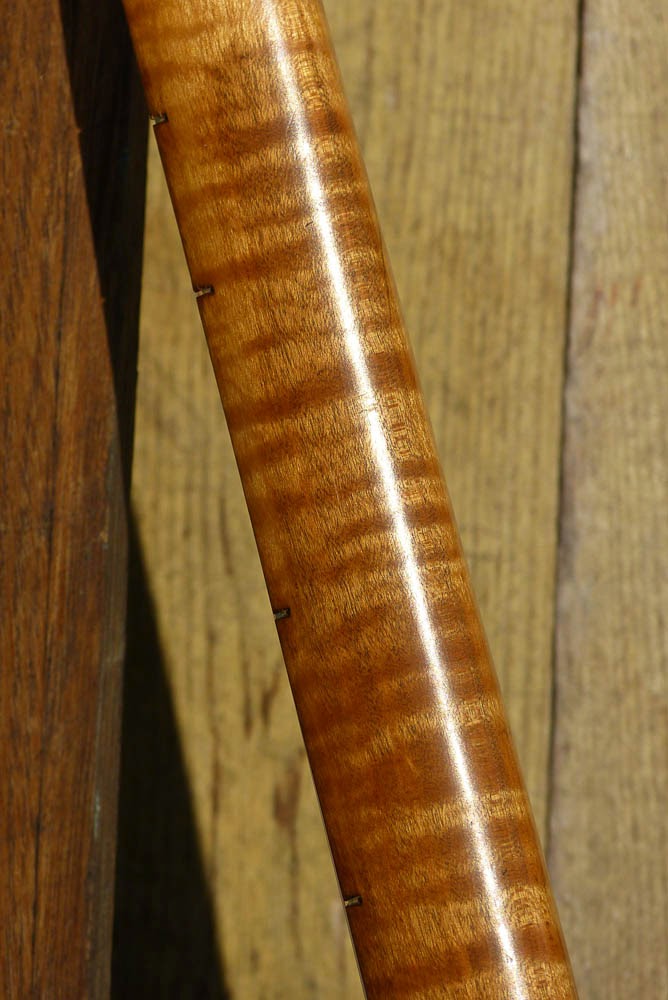c.1920 John Bencic "Lute Banjo" Tambura Conversion
I bought this Cleveland-made John Bencic-maker Macedonian tambura (of the "tamburitza" family of instruments) a while back and have been stewing over how to address its numerous condition issues since initially regluing some seams and repairing headstock and neck hairline cracks. The biggest problem is that the neck was quite warped. To combat that I removed the (already falling-out) tacked-in frets and started leveling the fretboard. I got "so far" in removing the warp (it's now down to about 1/32") and then decided to just go in a different direction and converted the instrument into a fretless banjo sort-of instrument.
It's a lot of fun to play and has a tone somewhere between a shamisen and uke with the volume level of an average concert uke. If you fingerpick or clawhammer it you get a banjo feel but if you use a light pick you can get an assortment of sounds vaguely-similar to various mid-east and far-east instruments.
There are reasons (mostly in time investment vs. return benefits and aesthetic changes) it would have been difficult to make this instrument "right" in its original two-course tambura configuration, so this "lute banjo" modification just seemed more fun and useful to me.
Because of the 24" scale length, it's strung with Aquila Nylgut strings and tuned up to 5-string banjo "A" tuning (aEAC#E) minus the low E string, so the tuning is aAC#E which is reminiscent of really old tackhead minstrel banjos.
It's a lot of fun to play and has a tone somewhere between a shamisen and uke with the volume level of an average concert uke. If you fingerpick or clawhammer it you get a banjo feel but if you use a light pick you can get an assortment of sounds vaguely-similar to various mid-east and far-east instruments.
There are reasons (mostly in time investment vs. return benefits and aesthetic changes) it would have been difficult to make this instrument "right" in its original two-course tambura configuration, so this "lute banjo" modification just seemed more fun and useful to me.
Because of the 24" scale length, it's strung with Aquila Nylgut strings and tuned up to 5-string banjo "A" tuning (aEAC#E) minus the low E string, so the tuning is aAC#E which is reminiscent of really old tackhead minstrel banjos.
Because I hung the "drone" string off the edge of the fingerboard, I lightly tack-glued the bridge in place to keep it from sliding over back towards the center of the body.
The old machines have a nicely-engraved coverplate like one finds on most tamburitza-family instruments. Note that the new nut (like its original nut) is cut in a trapezoidal shape which means it can be wedged firmly into the nut slot. I've hung that drone string past the fingerboard's edge and used a drilled hole in the nut to keep it in place.
Here's my quick solution for a drone "pip" plus down-tensioner for that string. Interestingly, because of the deeper U profile of the neck, the left hand doesn't rub up against the off-board drone at all. I was thinking I might have to go to some sort of 3-course variant with one string doubled up but this solution turned out just fine.
It's a gorgeous maple neck -- too bad it turned out to be unstable for the steel strings it was originally equipped with!
The original tie-blocks for the steel strings work even better for the Nylgut ones.










Comments